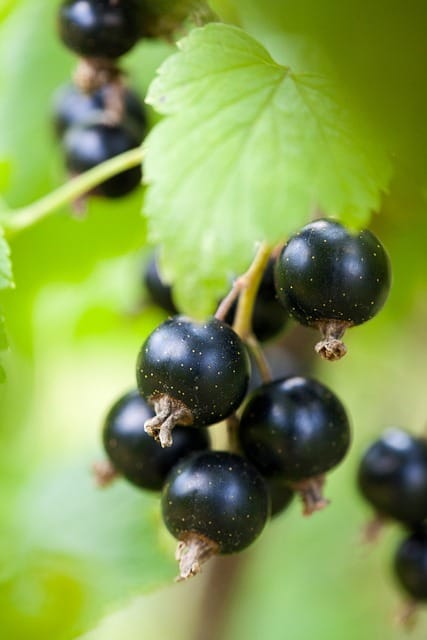How to grow Blackcurrants
Blackcurrants (Ribes nigrum) are small, tart fruits that are rich in antioxidants and vitamins

In this article:
- Introduction to Blackcurrants
- Choosing the Right Varieties
- Site Selection and Preparation
- Planting Blackcurrants
- Proper Watering and Fertilizing Techniques
- Pruning and Training Techniques
- Dealing with Pests and Diseases
- Harvesting and Storing Blackcurrants
- Common Uses for Blackcurrants
- Frequently Asked Questions (FAQs)
- Conclusion and Final Tips
Introduction to Blackcurrants
Blackcurrants (Ribes nigrum) are small, tart fruits that are rich in antioxidants and vitamins. They are commonly used in jams, jellies, desserts, and beverages. Blackcurrant plants are hardy and can thrive in various climates, making them an excellent addition to any home garden.
Choosing the Right Varieties
Before starting to grow blackcurrants, it's essential to select the right varieties suitable for your climate and preferences. Some popular blackcurrant varieties include 'Ben Sarek', 'Ben Hope', and 'Ben Connan'. Research different varieties and choose those that will thrive in your local conditions.
Site Selection and Preparation
Blackcurrants prefer full sun but can tolerate partial shade. Choose a location with well-drained soil that is slightly acidic. Prepare the site by removing any weeds, stones, or debris and enriching the soil with organic matter such as compost.
Planting Blackcurrants
Plant blackcurrants in early spring or late fall. Dig a planting hole that is wide and deep enough to accommodate the roots. Place the plant in the hole, ensuring it sits at the same level as it was in the nursery pot. Backfill the hole and gently firm the soil to remove any air pockets.
Proper Watering and Fertilizing Techniques
Blackcurrants require regular watering, especially during dry spells. Give them a deep soak every week, ensuring the water reaches the roots. Avoid overwatering, as this may lead to root rot. Fertilize the plants in early spring with a balanced organic fertilizer to promote healthy growth.
Pruning and Training Techniques
Regular pruning is crucial for blackcurrants to maintain their shape, promote airflow, and stimulate fruit production. Prune during late winter or early spring when the plants are dormant. Remove any dead or diseased branches, as well as any crossing branches. Train the remaining stems to an open-centered shape to allow light to reach all parts of the plant.
Dealing with Pests and Diseases
Blackcurrants can be susceptible to pests such as aphids, mites, and caterpillars. Monitor your plants regularly and take action at the first signs of infestation. Use organic pest control methods whenever possible. Common diseases affecting blackcurrants include powdery mildew and leaf spot. Proper sanitation, adequate airflow, and disease-resistant varieties can help prevent and manage these diseases.
Harvesting and Storing Blackcurrants
Blackcurrants are ready for harvest when they turn fully black and are slightly soft to the touch. Use sharp scissors or pruning shears to cut the entire bunch from the plant. Store blackcurrants in the refrigerator for a few days or freeze them for longer-term storage. They can also be dried or made into preserves, syrups, or juices.
Common Uses for Blackcurrants
Blackcurrants have a variety of uses in the kitchen. They can be used to make sauces, jams, jellies, pies, muffins, ice creams, and sorbets. They also add a unique flavor to beverages like smoothies, teas, and cocktails. Explore different recipes and experiment with blackcurrants to discover your favorite culinary creations.
Frequently Asked Questions (FAQs)
Q: How long does it take for blackcurrant plants to bear fruit?
A: Blackcurrant plants typically start bearing fruit after 2-3 years of growth.
Q: Do blackcurrants need any special care during winter?
A: Blackcurrants are generally cold-hardy, but you can protect them during severe winters by covering the plants with straw or mulch.
Q: Can I grow blackcurrants in containers?
A: Yes, blackcurrants can be grown in containers if you choose dwarf varieties and provide them with adequate sunlight, water, and nutrients.
Conclusion and Final Tips
Growing blackcurrants can be a rewarding experience. With the right variety selection, proper care, and maintenance, you can enjoy a bountiful harvest of these delicious fruits. Remember to provide them with adequate water, sunlight, and nutrients, and address any pest or disease issues promptly. With patience and dedication, you'll be enjoying your homegrown blackcurrants in no time!
